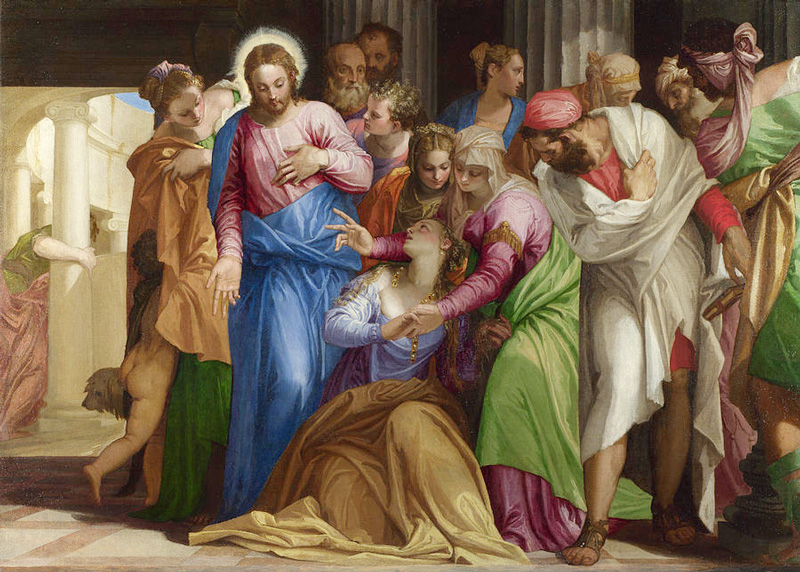
A consideration of the spiritual benefits of why Catholics kneel during Mass does raise other questions. Why do the faithful kneel during the time bread and wine become Christ’s Body and Blood, but remain standing to receive it?
Kneeling prayerfully before Jesus occurs frequently in the New Testament. The sick, rulers, desperate parents and the Apostles alike all knelt before the Lord. Catholics coming forward to receive the same Jesus in Holy Communion plead for the Lord’s favor now as then.
For centuries, Catholics did kneel to receive the eucharistic Lord. Most western churches had altar rails that separated the sanctuary from the nave. These likely originated from the early Church custom of shielding the sanctuary by ornate wood screens in order to better protect Liturgical action and elements from both insects and the livestock brought to be blessed and shared.
Originally a white cloth would be laid under where Communion was received to protect any dropped Eucharist. Increased reverence for the Real Presence motivated believers to choose, and local bishops to instruct, that Communion be received directly on the tongue, while kneeling. The screens and white cloth developed into the altar rail at which the faithful could kneel to receive Holy Communion.
The reforms of Vatican Council II made no mention of the need to remove altar rails, which happened in most places. There was never a rule that churches had to have one. The Liturgy before 1965 was written more from the perspective of what the priest had to do, but as a rediscovered priesthood of the Baptized emerged, countries throughout the world experimented with different ways of distributing Communion.
By 1969, each territorial group of Bishops was permitted to determine how Communion was to be received in their dioceses and the bishops of the United States chose standing to emphasize the unity of the congregation, some members of which are not physically able to kneel. Subconsciously, the altar rail became viewed as a relic of bygone days that symbolized a condescending view of God’s people. Much beauty was discarded.
The most recent edition of the Roman Missal gives individuals the option of kneeling to receive Communion. Some pastors now distribute while standing at a kneeler to more safely accommodate those who wish to kneel. This also helps brace those who stand, but are unsteady on their feet.
In an age when massive litigation results from tripping and falling in public spaces, perhaps it’s time for a reconsideration of the altar rail’s benefits. In devotion, sweethearts propose marriage on bended knee. Catholics should be free to show the same deference to the Christ they can only now see sacramentally.
If a kneeler, or altar rail is viewed only in reference to its commentary on our state in life, then proper focus has been lost. The altar rail became a visible reminder that entrance into heaven is not automatic. It happens when, as St. Paul said, we bend the knee with those in heaven toward the Lord.

